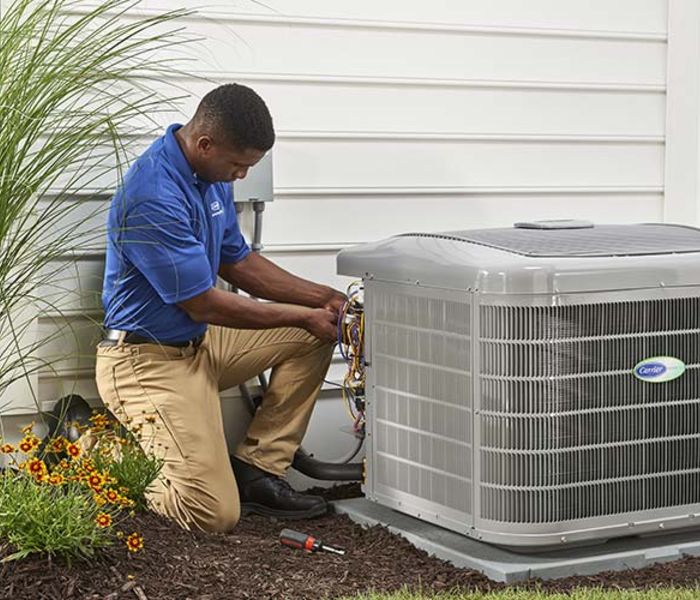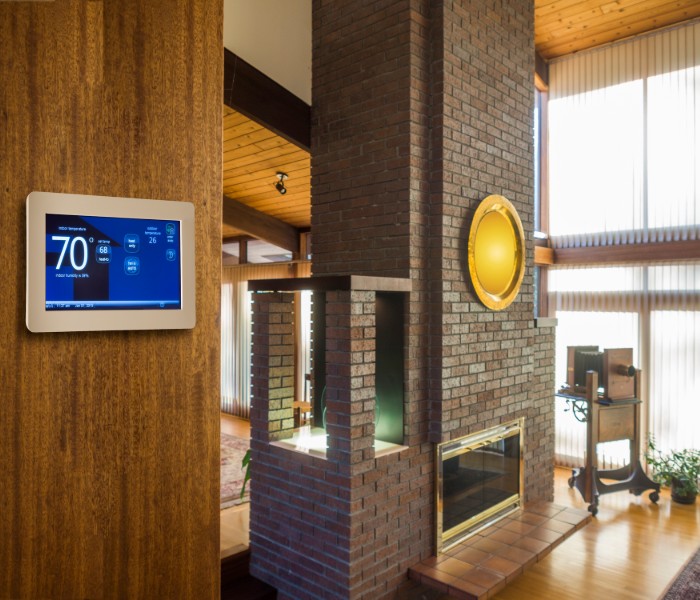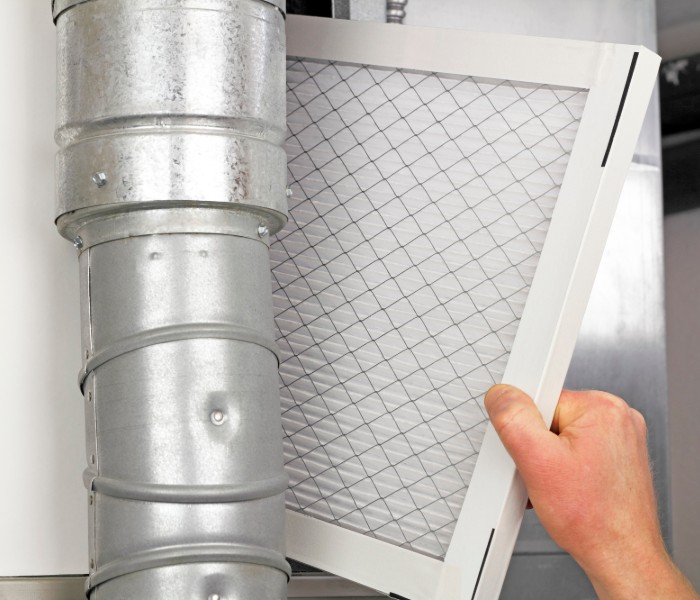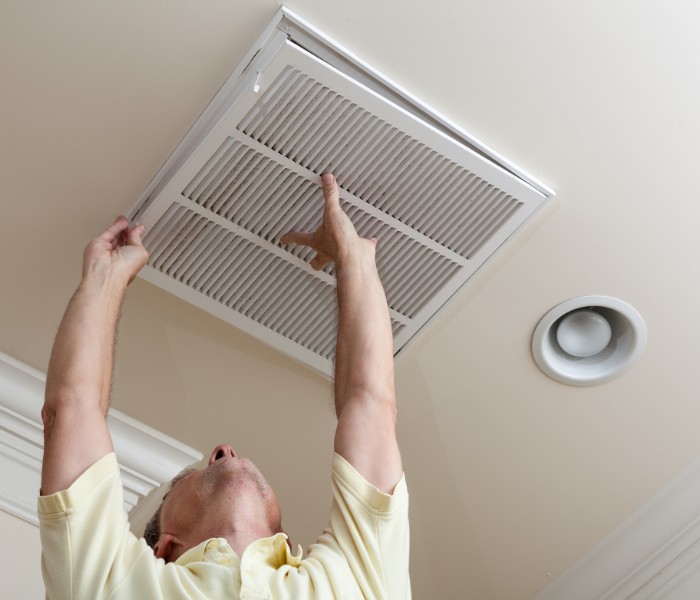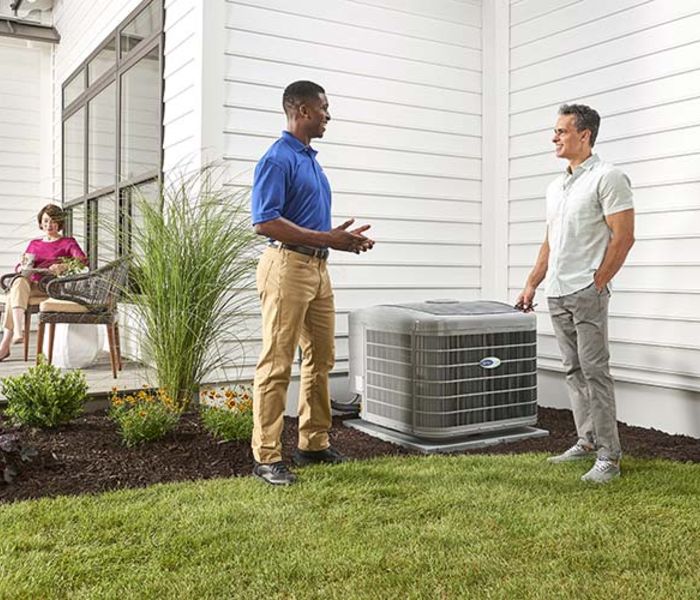Sharing is caring!
During the sweltering months of summer, we all rely on our air conditioning systems to keep us cool. Not only is it more comfortable, but for some, it's essential for safety. Those with respiratory issues, allergies, and other health conditions could suffer serious side effects without the mechanically cooled running throughout their homes. However, while we're all keeping ourselves cool and cozy inside, are the air conditioning units we're using dangerous for the environment outside?

Air conditioning units are bad for the environment in part. The hydrofluorocarbons (HFCs) and chlorofluorocarbons (CFCs) emit pollutants that put holes in the ozone. AC systems require enormous amounts of energy to operate, and fossil fuels burned for electricity contribute to ozone depletion.
It's known that heat can cause fatalities. The CDC reports that up to 600 people die in the United States annually from extreme heat conditions. So, if you want to stay safe and do your part to protect the environment, what choices do you have? Take a few minutes to learn more about what kinds of air conditioning systems are out there, and how you can enjoy the best of both worlds through environmentally friendly AC unit options.
Are Air Conditioning Units Responsible for Global Warming?
If you've heard of the 'greenhouse effect,' then you comprehend what global warming is. By definition, global warming is the result of the atmosphere trapping heat coming from Earth and radiating towards space. In the past few decades, scientists have reported the highest temperatures on record. The conclusion is that we're emitting more and more of these harmful gas types through the daily lives we lead.
Cars, appliances, factories, and other essential pieces of producing pollution by using energy or electricity in various forms. The pollution, or harmful gasses, is what causes the depletion of the ozone layer.
Different types of gasses are emitted at all times around the globe. Some of them are long-lived gasses, while others are semi-permanent. Some react physically or chemically, while others do not. Those that don't respond are considered to be the primary force behind climate change. The gasses that do react are referred to as 'feedbacks' by researchers.
The different gases that are contributing to global warming and the greenhouse effect include:
- Water vapor - the most prevalent greenhouse gas. As the Earth's atmosphere warms, water vapor acts as feedback and increases precipitation and cloud formation.
- Carbon dioxide (CO2) - naturally produced and part of the atmosphere from human respiration and volcanic eruptions. Also, created by humans since the Industrial Revolution, CO2 emissions have increased by 47% and are considered to be the most destructive force of climate change.
- Methane - livestock, rice cultivation, human activities, and waste decomposition all release methane gasses. It's more powerful and damaging to the greenhouse effect; however, not as abundant as CO2.
- Chlorofluorocarbons (CFCs) - a completely synthetic gas, previously used in appliances like air conditioning systems and various other applications. CFCs are now highly regulated and being phased out after research showed how destructive the human-made compound is to the ozone layer.
- Nitrous oxide - a gas that's produced through fossil fuel combustion, nitric acid production, biomass burning, and in the use of organic and commercial fertilizers.
People are the primary reason for global warming, and all of the problems aren't because of the operation of air conditioning units. While the systems produce a fraction of the harmful greenhouse gasses, there are plenty of other contributing factors that scientists are keeping an eye on.
How Do Air Conditioning Systems Create Pollution?
When you think of pollution, does your mind picture garbage lying alongside the highway or on the beach? Maybe you think of the enormous amount of gas emissions that can be seen for miles from some industrial locations. What we don't think of is our air conditioning system.
Turning on your AC unit at the start of summer doesn't create much of a scene. If it's old, you might hear a bit of spitting and a sputter. There could be a leak here or there. You likely don't think, "this air conditioner is harming the environment because of all the pollution!"
What we can't see with our own eyes is often challenging to comprehend.
Besides trash and the visible smoke coming from stacks at your local manufacturing plant, other elements are considered to be pollutants and disastrous for the atmosphere and environment. The invisible gases found in AC units create pollution, but in a way that we don't always think about.

What Harmful Gases Do AC Units Emit?
Now that you know that several different gas types lead to environmental issues, we can discuss which of these come from air conditioning systems. When manufacturers first started producing air conditioning units, a liquid refrigerant, the CFCs mentioned, was used to create the cooling effect.
Today, CFCs are no longer used in more modern cooling equipment because scientists have discovered that they are so devastating to the environment. Now, HFCs are used as the refrigerant instead. Let's briefly discuss the difference between these two compounds.
Hydrofluorocarbons and Chlorofluorocarbons
Hydrofluorocarbons and chlorofluorocarbons are both damaging to the atmosphere. However, one is no longer used because of just how much it has contributed to global warming. Why are HFCs more widely accepted today?
- CFCs: Chlorofluorocarbon is a type of refrigerant that has been used in air conditioners, blowing agents, medicinal applications, and degreasing agents. CFCs contain chlorine and have been more commonly referred to as Freon. Since the early 1990s, CFCs have been regulated more strictly because of the ozone depletion caused by the gas being sent into the atmosphere. In 1995, the production of CFCs was halted, and since then, equipment like refrigerators, freezers, and air conditioners have slowly been updated by manufacturers with more environmentally-friendly options.
- HFCs: Hydrofluorocarbon is the replacement refrigerant that contains hydrogen properties instead of chlorine. It accomplishes the same job as CFCs, but HFCs break down more easily and faster. There is no contribution to the destruction of the stratospheric ozone with HFCs. There is an overall lower potential for global warming problems related to HFCs being used in AC, building insulation, fire extinguishers, aerosols, and other applications that require the gas emission for operation.
Do Air Conditioning Systems Produce Carbon Dioxide (CO2)?
The short answer is, air conditioning systems do not directly produce carbon dioxide (CO2). The more immediate sources for CO2 emissions are burning hydrocarbon fuels:
- Oil
- Gasoline
- Natural gas
- Wood
- Coal
When the burning or combustion takes place, oxygen in the air combines with fossil fuels. The end result is carbon dioxide and water vapor, both being released into the air and traveling towards the atmosphere.
While air conditioning units don't produce CO2 from the system itself, the devices require a lot of electricity to run. Where does the electricity come from? The burning of hydrocarbon fuels.
How Much CO2 Do AC Units Emit?
The EIA U.S. Energy Information Administration reported that in 2009, 87% of homes in the United States had some form of air conditioning equipment. That is up from a previous report of 68% of residential locations having AC in 1993. The trend is continuing on the same projection, with expectations being nearly every home having AC eventually. With the most current findings, it's estimated that up to 6% of all energy use comes from air conditioners alone. That translates into somewhere around 100 million tons of carbon dioxide being sent towards the ozone each year.
Let's go back and review the question, "Are air conditioning units bad for the environment?" Turning on your air conditioner isn't going to release CO2, but the power required to run the equipment is leading to the damaging CO2 emissions.

What Other Negative Effects Do Air Conditioners Have?
If it's been proven that air conditioners are that terrible for the environment, does it leave you asking how good they are for your health? While the dangerous gases are being released towards the atmosphere, what about what's happening inside your home? Is it really worth staying cool during the warmer seasons, or should you try and tough it out?
Some of the adverse effects that are associated with operations of AC units include:
- Headaches
- Dry eyes and skin
- Respiratory problems
- Noise pollution
- Transmission of infectious diseases
- Allergic reactions
The quick answer is you should never risk your life because of overheating by not taking advantage of an air conditioning system being operational in your home or workspace. The most crucial action you can take is what you're doing right now by arming yourself with knowledge about the possible effects. With these details, you know what to watch out for, and you can adjust accordingly. By taking the right steps, you can enjoy air conditioning in your residence without any health issues and minimal disruption to the environment.
Are There Environmentally Friendly Air Conditioning Options Available?
We mentioned that air conditioners used to be manufactured with the now-outlawed CFC refrigerant. The newer models being introduced are implementing more environmentally-safe HFC refrigerants, making them all technically more friendly for the slowly depleting ozone layer.
When you walk into your heating and cooling provider's warehouse or get handed a brochure with all the possibilities for new air conditioning system installation, it doesn't take much to get overwhelmed with all the options. Before you invest in a new air conditioner, know what you're looking for and what you're looking at.
Bonus Tip: Instead of running your air conditioner on days during the summer when it's really not all that warm, put a fan in the window to circulate the air.

How to Choose the Best Air Conditioning System
Before you take the plunge and purchase a new air conditioner for your home or business, you should know what options are available. Some of the choices you have to include:
- Central air conditioning - cools through existing ductwork
- Window air conditioning units - standard for a single room or small space cooling
- Ductless, mini-split AC units - for homes without existing ductwork
- Portable AC systems - self-contained and can be moved from room to room
- Hybrid air conditioners - alternate energy use through a heat pump system
- Geothermal heating and cooling equipment - geothermal coil installed into the ground that pulls heat from the Earth to warm in the winter and extracts heat for cooling effects in the summer
The version that's ideal for you will depend on your budget, the space you're trying to cool, and the region you live in. Trust your HVAC contractor to discuss all of these more in-depth to better understand what to expect.
New Air Conditioner Installation - Things to Consider
After you decide with your HVAC company professional what type of AC unit you want, there are a few other factors to put into action before making the final purchase.
- Check For Energy Star Certification
The Energy-Star certification sticker shows that the product has met the guidelines set forth by the Environmental Protection Agency. That means your air conditioner isn't as bad for the environment as AC units that haven't been certified.
- Pick an AC Unit That's the Right Size
An air conditioner that is too small is going to work harder, producing more pollution. A device that's too big will waste energy.
Don't run your AC equipment if it isn't absolutely necessary. Keep your blinds closed when the sun is at its peak to keep the light and heat out. Run fans to keep the air circulating. Replace heat-producing incandescent light bulbs with LEDs.
Air conditioners can get costly, so before you make a significant investment in a new cooling system, make sure you know exactly what you need to cool the inside of your property while also taking the right steps to protect our precious environment.
Conclusion - Can You Operate AC Systems AND Avoid Climate Change Issues?
Now that you've heard it all, are you still wondering what the best option is? If air conditioning systems are bad for the environment, how can you stay cool, comfortable, and safe? To break down the main points, yes, AC equipment does emit pollution with CO2 from energy use and HFCs. However, you require this equipment in your home or commercial location to remain protected from the rising temperatures outside. So, how can you have the best of both worlds?
It's possible in 3 easy steps:
- Start by keeping in mind what your AC unit is capable of producing. Chances are if your AC unit is more than 15 or 20 years old, it still has the devastating CFC refrigerants in it, and you need to eliminate it now!
- Next, shop around for a more energy-efficient unit. There are plenty of affordable options on the market. Ask the salesperson at your local heating and cooling company what you can expect from an updated air conditioning installation. You might be surprised at how much less damage you're causing with more modern air conditioning systems. Not only that, but you'll see huge savings on your monthly utility bills, too!
- Finally, only run your AC when you unquestionably need it. By turning it on less, you're not using as much electricity. That means fewer fossil fuels burning and less CO2 emissions.
There's no possibility that air conditioning is going away now that we have discovered all the luxuries that come with the complex cooling equipment available. You can expect more research on global warming, the greenhouse effect, and what manufacturers and consumers can do to help protect the ozone layer.
You have the information you need, so it's up to you to go out and make the changes necessary. Contact your local HVAC company if you think an AC replacement is in your near future. A reputable one will lead you in the right direction.

Who We Are
Red Star Cooling & Heating is a locally owned and operated HVAC company in The Woodlands, Texas. The fully licensed and certified team of HVAC contractors have been performing AC installation, AC maintenance, AC repair, and AC replacements in the Dallas region for over 15 years. They offer competitive rates on air conditioning systems, heating equipment, air filtration, and other HVAC services. 24-hour emergency AC repair technicians are on call at all times to assist both residential and commercial HVAC clients with their needs. Red Star Cooling & Heating is a factory-authorized Carrier dealer offering flexible financing options, warranties on parts and labor, and discounts on new installations. Call the customer service team to get a free quote for HVAC services, or visit the main website to learn more.

